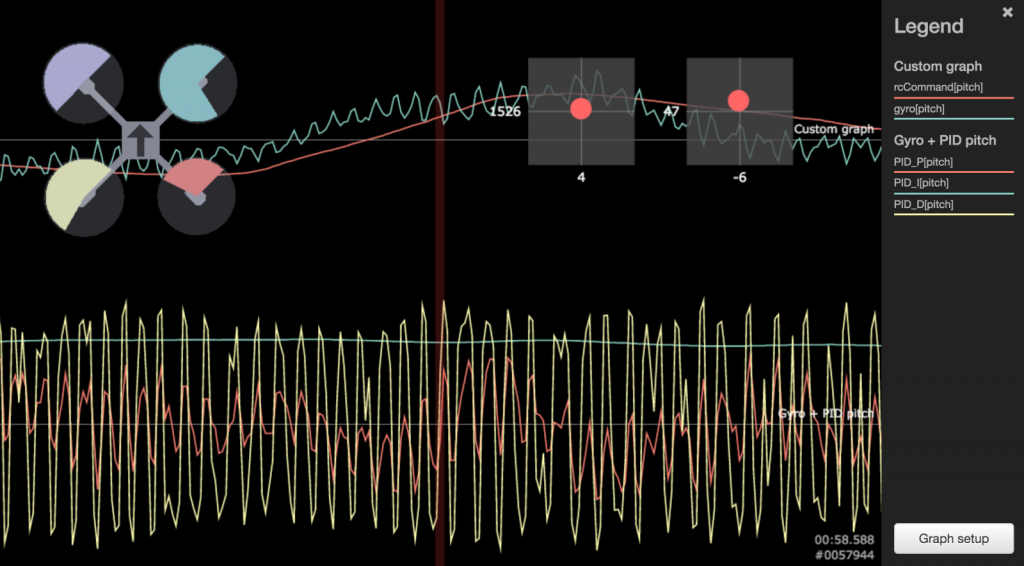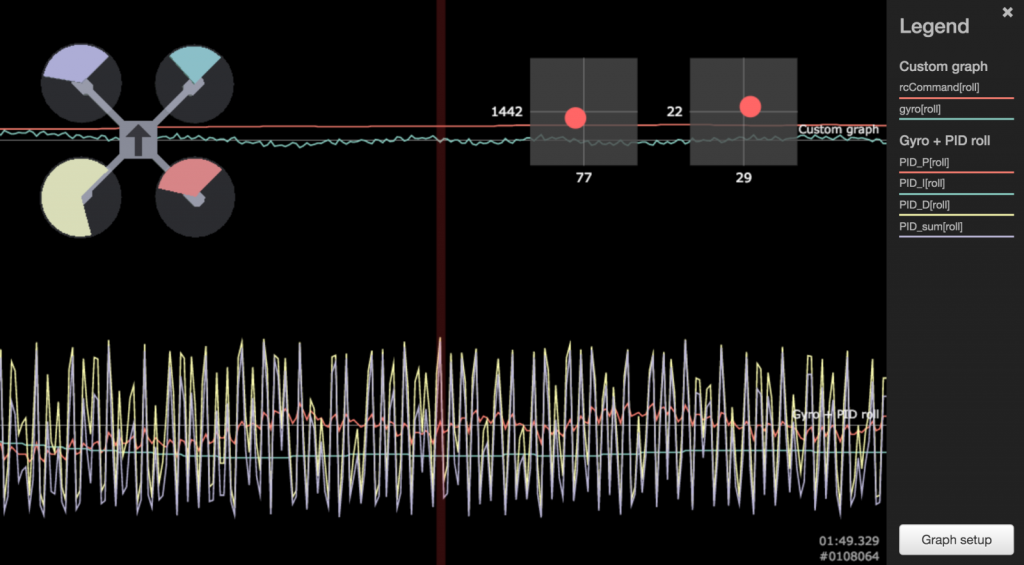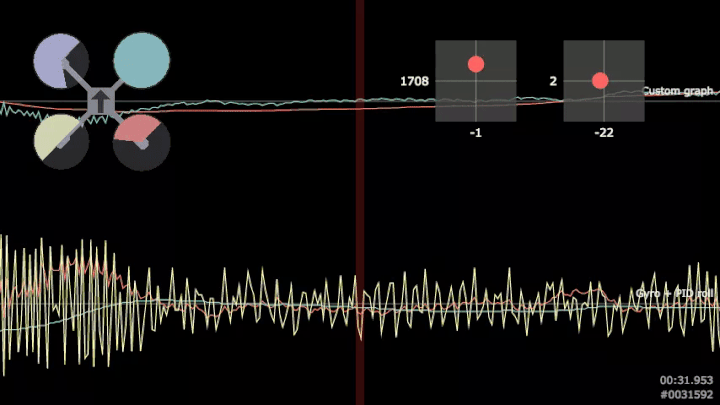Detecting Cleanflight PID tuning issues with Blackbox: excess D gain
Welcome to second part of Blackbox PID tuning tutorial. Last time I have showed few examples how excess P gain might look like. Today I will write few words about next common PID tuning problem: too much D. Derivative (future) part of PID controller is very useful, since it allows to smoothen control loop output when it is reaching the target. So, at the end of move (roll, pitch, yaw, anything else) multicopter will start to "slow down" before target is reached. It's just like accelerator pedal in a car. When you want to reach 50 you start to release it before you reach 50, and not in the exact moment you reached target speed. If you would, you would have to use brake to slow down to 50. Derivative part helps not to overshoot. Without it, movement would be shaky, not smooth.
Unfortunately, D is tricky. Like everything that tries to see the future, it is unreliable and can introduce noise. We do not like noise. Not enough D = shaky, mechanical, movement and overshooting. Too much D = extra noise, vibrations, damped response.
How excess D would look like in Blackbox logs? Like this:
Do you see what is happening? Derivative part of PID control loop in all those examples jumps up and down like crazy. D amplitude is bigger that P and I all together and D dominates total output. Up and down, up and down. All the time. Looks at motor output. They also jump from low throttle to high throttle. Constant noise that is introduced to gyros and again into PID control loop. Only the fact that motor inertia is big enough saves situation somehow. Quad might even be flyable, but flight characteristics would be terrible. Solution? Lower D. How much? Hard to say, but in this case I would begin with lowering it by half.

I'm Paweł Spychalski and I do things. Mainly software development, FPV drones and amateur cinematography. Here are my YouTube channels:



